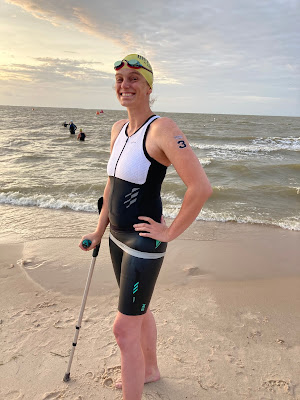Evaluating When Something Went Wrong
A330 and Navigation
To navigate, the A330 needs a "TO" waypoint a "FROM" waypoint and a line in between. The line between is the route. When ATC takes you off that route by giving you a heading, you are flying in heading mode. The route is still on your map and in the MCDU, enabling you to return to it.
Now imagine you are off your route and flying on a heading and ATC tells you to fly direct to another point. Remember, the airplane needs a point it’s flying FROM and a point it's flying TO, so the magic creates a point at your Present Position (PPOS) to anchor your position as a "FROM" point. This enables the plane to navigate FROM a point TO another point.
CLEARING THE PPOS
A330 pilots are taught to clean up to the PPOS in order to clear the map and the MCDU of unnecessary waypoints not being used because they are on the portion of our route behind the plane. There are benefits to this process, in that the pilot is now able to see the lateral distance in mileage to what is in front of the plane not including what is behind.
Because we don't need all those other points behind us we “Clean up to the PPOS.” Meaning, we can clear out all the points that we're not using (behind us) up to the present position (PPOS). However, before you ever push any buttons... it’s imperative to know that in the Airbus world, there is a time and place for everything, and good CRM dictates you crosscheck with your fellow pilot.
Systems Note: A significant difference between Airbus and Boeing is that on the Boeing FMS, the pilot is able to input a selection and enable the other pilot to confirm the input and results prior to selecting "execute". There is no execute button on the Airbus MCDU. What you input, is what you get. Therefore, confirming with the other pilot is essential.
A KEY A330 Learning Moment
Systems Note: When you clear to the PPOS, it clears the points behind you that have not sequenced. However, the A330 knows that you have cycled past a point if you pass it within five miles. If the point sequences, you do not need to clear it.
Back to the Shanghai Approach
Think about “where” we were on the approach in Shanghai. We were being vectored inside the Final Approach Fix—approach armed, and shortly thereafter we captured the localizer, and the glide-slope was just about to capture when he decided to clear the points behind us, and cleared one too many.
By clearing on too many points he wiped everything out on the Map. But, because our approach was armed the plane knew where it was, and knew it was flying the tuned ILS.
We Did Not Need the Map.
The runway had been selected, tuned, identified, and the approach was armed. The localizer had just engaged... until pilot intervention. The plane was flying the approach programed into the MCDU and it was armed. Therefore, the first error of wiping out the map was not necessarily a problem other than a distraction. An effort to fix a non problem became the problem.
The Chain of Events
Humans make errors. The key to safety is to have procedures in place to avoid errors, but also to mitigate them when they occur to avoid an accident. Like most situations, it takes more than one event to cause an issue. The proverbial chain of events.
Sequence of Circumstances
Shanghai ATC vectored us “inside” the outer marker. How often does that happen in instrument conditions? Well, maybe in China. A good note to brief in the future.
We had been trained to clean all those points behind us. My Captain did not have a clear understanding of why we were doing that, it simply became a step in the process. Wiping out the map and his need to get it back, identified a second hole in his systems knowledge.
His actions to “Fix the problem” when we didn't have a problem, at a critical phase of flight, is what created a problem. We did not need the MAP. Without an understanding of what would happen by removing the approach while on the approach, caused us to lose everything. Despite the late hour, fatigue, instrument conditions, meters, an unfamiliar environment and lack of understanding he did know how to reinsert the approach quickly.
Learning Moments
- Understand your airplane’s navigation system.
- Maintain heads up at a critical phase of flight. Not heads down programing the MCDU.
- Button pushing needs to happen at a safe altitude.
- MCDU selections must be confirmed by the other pilot.
- If it's not broken, don’t fix it.
- If a stabilized approach can’t be continued to a safe landing: Go Around.
With highly automated aircraft, abundance of traffic, runway changes, etc, we find ourselves programming the MCDU at lower altitudes more than ever before. Pilots become reliant on the automation. However, if your company doesn't have a firm altitude where you should be heads up, then make your own guidance. The more systems knowledge you have to avoid errors, the better off you'll be. But always crosscheck with the other pilot to confirm inputs before you do something that could impact the flight.
If you have been cleared for the approach and accepted the approach, then you should be able to fly it with the information you have programmed and verified. If you have the skills to fly the approach manually, without the data in the box, then do it. If you don't, then go-around. The most important aspect is to know your plane. Knowledge improves safety.
At my 7th airline, the top of the 747 checklist stated:
"DO NOT HURRY. FLY THE PLANE"
Those are words to live by!
There is also a difference between clearing "to" the PPOS and actually clearing the PPOS. Wednesday I will provide a tip on how to get our of trouble if you inadvertently wipe out your approach.
Enjoy the Journey,
and Fly Safe. Fly Smart.
XOX Karlene





































